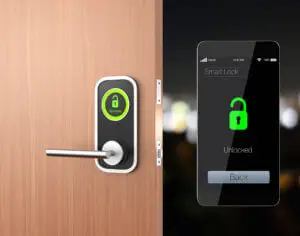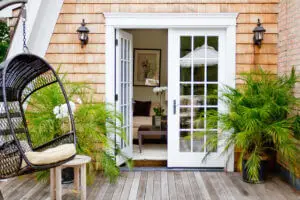Safeguarding valuables has been a human priority for millennia. From ancient kingdoms storing their treasures in elaborate vaults to today’s homeowners securing personal documents in lock boxes, the urge to protect what’s valuable remains constant. Modern security threats and increasing home break-ins have made personal security lock boxes more essential than ever before. This comprehensive guide delves into the intricacies of modern-day security lock boxes, offering insights on choosing the perfect safe haven for your belongings.
Introduction to Security Lock Boxes
What Is a Security Lock Box?
A security lock box is a protective container designed to safeguard valuable items, important documents, cash, jewelry, and other precious belongings from theft, fire, water damage, and unauthorized access. These compact security solutions range from simple key-operated boxes to sophisticated biometric-enabled safes with multiple layers of protection.
Unlike traditional home safes, security lock boxes offer portability and convenience while maintaining robust security features. They serve as the first line of defense for your most important possessions, whether you’re storing emergency cash, backup hard drives, or irreplaceable family heirlooms.
The modern security lock box market has evolved significantly, incorporating advanced technologies like fingerprint recognition, smartphone connectivity, and tamper-proof alerts. These innovations have transformed simple storage containers into intelligent security systems that provide real-time monitoring and access control.
Historical Evolution of Safes and Lock Boxes
The concept of secure storage dates back to ancient civilizations, where wooden chests with primitive locking mechanisms protected valuable goods. Egyptian pharaohs used elaborate stone sarcophagi not just for burial purposes but also to secure treasures in hidden chambers.
During the Industrial Revolution, the development of steel manufacturing revolutionized safe construction. The first fire-resistant safes appeared in the 1840s, featuring thick steel walls and innovative locking mechanisms. These early models laid the foundation for modern security lock boxes.
The 20th century brought significant technological advances. Electronic locks replaced traditional mechanical systems, offering enhanced security and convenience. The introduction of digital keypads, time-delay locks, and alarm systems transformed security storage from passive containers to active protection systems.
Today’s security lock boxes represent the culmination of centuries of innovation. They combine traditional craftsmanship with cutting-edge technology, offering unprecedented levels of security in compact, user-friendly packages.
Different Types of Security Lock Boxes
Key-based vs. Digital
Traditional Key-based Lock Boxes
Key-operated security lock boxes remain popular due to their simplicity and reliability. These systems use mechanical locking mechanisms that don’t require batteries or electronic components, making them virtually maintenance-free. High-quality key-based locks feature multiple tumbler systems and hardened steel construction that resists picking and drilling attempts.
The main advantage of key-based systems lies in their independence from power sources and technology failures. They provide consistent access regardless of electromagnetic interference or battery depletion. However, the security of these systems depends entirely on key management and the risk of key duplication or loss.
Digital Lock Box Systems
Digital security lock boxes offer superior convenience and enhanced security features. These systems typically use programmable keypads, allowing users to set custom access codes that can be changed regularly. Advanced digital models include features like multiple user codes, temporary access codes, and audit trails that record access attempts.
Biometric digital lock boxes represent the pinnacle of access control technology. Fingerprint recognition systems eliminate the need for keys or codes, providing instant access while maintaining the highest security standards. Some premium models incorporate multiple biometric identifiers, including fingerprint, facial recognition, and voice authentication.
Smart lock boxes with smartphone connectivity offer remote monitoring and control capabilities. Users can receive real-time alerts, grant temporary access to trusted individuals, and monitor access history through dedicated mobile applications.
Portable vs. Fixed Units
Portable Security Lock Boxes
Portable lock boxes provide flexibility for users who need secure storage in multiple locations. These compact units typically feature lightweight construction with mounting holes for semi-permanent installation. They’re ideal for travelers, real estate professionals, and anyone requiring temporary secure storage solutions.
The best portable lock boxes balance weight with security, using aircraft-grade aluminum or hardened steel construction. Many features include weather-resistant seals and tamper-evident mechanisms that reveal unauthorized access attempts. Cable locks or mounting brackets allow secure attachment to fixed objects, preventing theft of the entire unit.
Fixed Installation Units
Fixed security lock boxes offer maximum security through permanent installation. These units bolt directly to walls, floors, or furniture, making removal extremely difficult without proper tools and a significant time investment. They typically feature heavier construction and more sophisticated locking mechanisms than portable alternatives.
Wall-mounted lock boxes save space while providing excellent security for documents and small valuables. Floor-mounted units offer larger storage capacity and can accommodate bulkier items like electronics or multiple document folders. Both installation types benefit from concealment options that hide the lock box behind furniture or within built-in storage areas.
Key Features to Look for in a Lock Box
Material and Durability
Steel Construction Standards
The foundation of any reliable security lock box lies in its construction materials. Premium lock boxes use thick-gauge steel, typically 12-gauge or heavier, for maximum strength and durability. The steel should be hardened to resist drilling, cutting, and prying attempts.
Look for lock boxes with continuous welding rather than spot welding, as continuous welds eliminate weak points that could compromise security. The door and frame should have overlapping construction that prevents prying access even if the hinges are compromised.
Fire-resistant lock boxes incorporate special insulation materials that protect contents from extreme temperatures. These units typically carry UL fire ratings indicating their ability to maintain interior temperatures below critical thresholds for specified time periods.
Corrosion Protection
Quality security lock boxes feature comprehensive corrosion protection to ensure long-term durability. Powder coating provides superior rust resistance compared to traditional paint finishes, while stainless steel components in locking mechanisms prevent corrosion-related failures.
Environmental sealing protects internal components from moisture, dust, and other contaminants. Look for units with weather stripping around door edges and sealed electronic components in digital models.
Security Features and Lock Mechanisms
Advanced Locking Systems
Modern security lock boxes employ multiple locking mechanisms to prevent various attack methods. Multi-point locking systems engage bolts at several locations around the door perimeter, distributing stress and preventing prying attacks.
Time-delay locks add an extra security layer by introducing mandatory waiting periods between access attempts. This feature deters quick grab-and-go theft attempts while allowing legitimate users planned access to their belongings.
Anti-drill plates protect lock cylinders from drilling attacks, while hardened steel components resist cutting and grinding attempts. Look for locks with anti-pick features like spool pins and security pins that complicate lock-picking attempts.
Tamper Detection and Alerts
Advanced security lock boxes include tamper detection systems that monitor for unauthorized access attempts. These systems can trigger audible alarms, send smartphone notifications, or activate silent alerts to security monitoring services.
Shock sensors detect impacts or vibrations that might indicate attempted forced entry. Temperature sensors can detect grinding or cutting attempts that generate heat. Motion sensors inside the lock box can detect if contents are disturbed even if the lock isn’t compromised.
Some premium models include hidden cameras that photograph anyone accessing the lock box, providing visual records of all access attempts for later review.
Top Brands and Their Offerings
Brand Reputation and Reviews
The security lock box market features several established manufacturers with proven track records of quality and reliability. When evaluating brands, consider factors like warranty coverage, customer service responsiveness, and long-term product support.
SRN TECH: Innovation in Security Solutions
SRN TECH has established itself as a leading manufacturer of premium security lock boxes under the SRN and SRNLOCK brands. Our commitment to innovation and quality has earned recognition from security professionals and satisfied customers worldwide.
Our product line encompasses everything from compact portable units for travel security to heavy-duty fixed installations for home and office use. Each SRN lock box undergoes rigorous testing to ensure it meets the highest security and durability standards.
Sally, our overseas sales manager, works directly with international distributors to ensure SRN products meet local security requirements and regulations. This global perspective helps us develop lock boxes that perform reliably in diverse environments and applications.
Market-Leading Features
SRN lock boxes incorporate cutting-edge security technologies, including biometric access control, smartphone connectivity, and advanced tamper detection systems. Our engineering team continuously develops new features based on customer feedback and emerging security threats.
Recent innovations include our proprietary anti-drilling technology that actively counters drilling attempts, and our smart notification system that provides real-time security updates through our mobile app. These features demonstrate our commitment to staying ahead of evolving security challenges.
Innovative Features and Technologies Introduced
Biometric Integration
The integration of biometric technology represents a significant advancement in lock box security. Fingerprint recognition systems eliminate the vulnerabilities associated with keys and codes while providing instant access for authorized users.
Advanced biometric systems can store multiple fingerprints and include backup access methods for situations where biometric reading isn’t possible. The best systems combine speed with accuracy, providing reliable access in under two seconds while maintaining false acceptance rates below 0.001%.
Smart Connectivity
Internet-connected lock boxes enable remote monitoring and control through smartphone applications. Users can receive instant notifications of access attempts, battery status, and tamper alerts regardless of their location.
Cloud-based access logs provide detailed records of all interactions with the lock box, including successful openings, failed attempts, and system maintenance events. This information proves valuable for security auditing and forensic analysis if needed.
Environmental Monitoring
Premium security lock boxes now include environmental sensors that monitor temperature, humidity, and other conditions that could affect stored items. These systems can alert users to conditions that might damage documents, electronics, or other sensitive materials.
Automatic climate control features maintain optimal storage conditions by activating internal heating, cooling, or dehumidification systems when needed. This capability extends beyond security to provide preservation services for valuable items.
Maintenance and Longevity Tips
Cleaning and Upkeeping
Regular Maintenance Schedule
Proper maintenance ensures your security lock box continues providing reliable protection for years to come. Establish a regular maintenance schedule that includes monthly visual inspections and quarterly deep cleaning procedures.
Clean the exterior using mild soap and water, avoiding harsh chemicals that might damage protective coatings. Pay special attention to the door seals and locking mechanism, removing any debris that could interfere with proper operation.
For electronic components, use compressed air to remove dust from keypads, sensors, and ventilation areas. Avoid using liquids near electronic components unless specifically recommended by the manufacturer.
Battery Management
Digital lock boxes require regular battery maintenance to ensure reliable operation. Replace batteries according to the manufacturer’s recommendations, typically every 12-18 months for standard alkaline batteries.
Consider upgrading to lithium batteries for extended life and better performance in extreme temperatures. Keep spare batteries stored in a cool, dry location and check their expiration dates regularly.
Many modern lock boxes include low battery warnings that provide several weeks of advance notice before battery replacement becomes critical. Don’t ignore these warnings, as complete battery failure could result in lockout situations.
Regular Security Checkups
Lock Mechanism Testing
Test your lock box’s operation monthly to ensure all components function properly. Verify that keys turn smoothly, digital codes work correctly, and biometric sensors respond consistently.
Check that all locking bolts engage and disengage properly, and that the door closes securely without binding or gaps. Any changes in operation could indicate wear or damage that requires attention.
For electronic systems, verify that all programmed codes still work and that temporary codes expire as scheduled. Update access codes periodically as a security best practice, especially if you suspect unauthorized access to the codes.
Physical Inspection
Inspect the lock box exterior for signs of tampering, damage, or wear. Look specifically for scratches around the lock cylinder, dents that might indicate impact attempts, or discoloration that could suggest exposure to extreme heat.
Check mounting hardware for looseness or corrosion, tightening bolts as needed to maintain a secure installation. Verify that concealment measures remain effective and that the lock box location hasn’t become more visible due to changes in furniture arrangement or lighting.
Examine door seals and weather stripping for cracks or deterioration that could compromise environmental protection. Replace damaged seals promptly to maintain the lock box’s protective capabilities.
Security System Updates
For smart lock boxes with software components, regularly check for firmware updates that might include security patches or new features. Install updates promptly to maintain optimal security and functionality.
Review access logs periodically to verify that all recorded access attempts were authorized. Investigate any suspicious entries or patterns that might indicate security concerns.
Update emergency access procedures and ensure that trusted contacts have current information about the lock box location and backup access methods.
Conclusion
Investing in a reliable security lock box represents a crucial step in protecting your most valuable possessions and important documents. The variety of options available today means you can find a solution that perfectly matches your specific security needs, whether you require basic document protection or advanced smart home integration.
The key to selecting the right security lock box lies in carefully evaluating your requirements, understanding the available technologies, and choosing a reputable manufacturer with a proven track record of quality and innovation. Consider factors like installation requirements, access frequency, and the types of items you’ll be storing when making your decision.
Now that you have explored the comprehensive world of security lock boxes, which features stand out as most important for your specific needs? Whether you prioritize biometric access, smart connectivity, or traditional reliability, there’s a security lock box designed to meet your requirements.
Ready to secure your valuables with confidence? Explore our complete line of SRN security lock boxes at srnlock.com and discover why thousands of customers trust SRN TECH for their most important security needs. Contact Sally, our overseas sales manager, for personalized recommendations and international shipping options. Don’t wait – protect what matters most with a premium SRN security lock box today.





